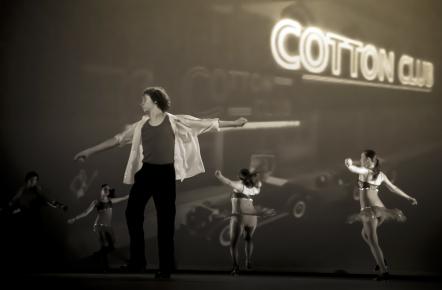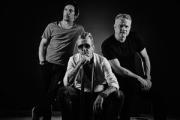New York, NY (Top40 Charts) The American 1920's, now commonly referred to as the "Roaring Twenties", began a cultural movement known as the
Jazz age. During this time many innovations in both song and dance emerged. The birth of Jazz is often credited to African American communities in New Orleans, but it didn't take long before it was adopted by the white middle class and became popular in large cities like New York and Chicago.
Jazz Music
Jazz in 1920's America was characterised by a mix of African American traditions and ideals held by the white middle class. Jazz got its expressive style from African traditions of playing and expressing one's self in their own way, and it's melody and instrumentation from traditional European music. Unlike other forms of contemporary music, jazz was heavily distinguished by its use of improvisation.
Jazz Venues
Jazz bands began popping up all across America. They played all kinds of venues, from small diners, casinos, and nightclubs, to large dance halls and even ballrooms. Famous jazz venues at the time included the Cotton Club in New York, where Duke Elington earned his reputation as one of the most prolific artists of the jazz movement during his four year residency at the club, and the Aragon Ballroom in Chicago which regularly featured bandleaders like Dick Jurgens, Freddy Martin and Wayne King.
Jazz on the Radio
The development of radio stations played an important role in the eruption of jazz music in the US, as it allowed the new tunes to be heard by listeners across the nation. During this rapid cultural shift, icons began to emerge, establish themselves as talented jazz musicians, and leave a substantial imprint on American music history. Musicians like Louis Armstrong and Jelly Roll Morton were instrumental in making improvisational solos the centrepiece of the music.
Rebellion of the Youth
Young people used jazz as an act of rebellion against the traditional values of their parents. The youth movement of the 1920's was synonymous with the popular fashion statements of the time such as 'Flappers' and 'Dappers'. Popular dance styles developed such as the Charleston, Cakewalk, Breakaway and the Flea Hop and were very popular amongst the youth of the time.
Older generations objected to the jazz age. As jazz grew in popularity amongst the American youth, so too did an anti-jazz movement amongst traditionalists to what they perceived to be the 'devil's music' and a threat to American society. A campaign was launched for censorship of jazz music being played on radio stations and for the abolishment of jazz bands performing in clubs and other venues. These people believed that the improvised rhythms of jazz music promoted immoral behaviour and promiscuity.
Charleston in particular had a bad reputation among traditional americans, who believed the dance was inherently sexual in nature which led to many of these black-orignated dances being banned in many establishments in the US.
The Decline of Jazz
Nowadays, it feels like jazz music is strictly limited to flapper-themed parties, cocktail lounges and casinos. Even the long standing association of jazz bands playing at casinos is becoming a thing of the past as Online Casinos as LegalBetting continue to grow in popularity. By the time the 1950's rolled around, jazz had fallen out of favour with american listeners as the Rock and Roll movement emerged. Listenership of jazz has only continued to decline in the modern era in preference to other forms of music. In fact, jazz, alongside classical music, accounts for less than 1% of music consumed by Americans.
While jazz is nowhere near as popular as it used to be, there is no denying the profound impact it had on American history and music. The jazz age marked a dramatic cultural shift in the US, in which totally new styles of music and dance were developed. However, jazz was more than just an artistic movement. During the Roaring Twenties, Jazz permeated into all aspects of American society and left a legacy that would have a large influence on future generations throughout the rest of the twentieth century.





















